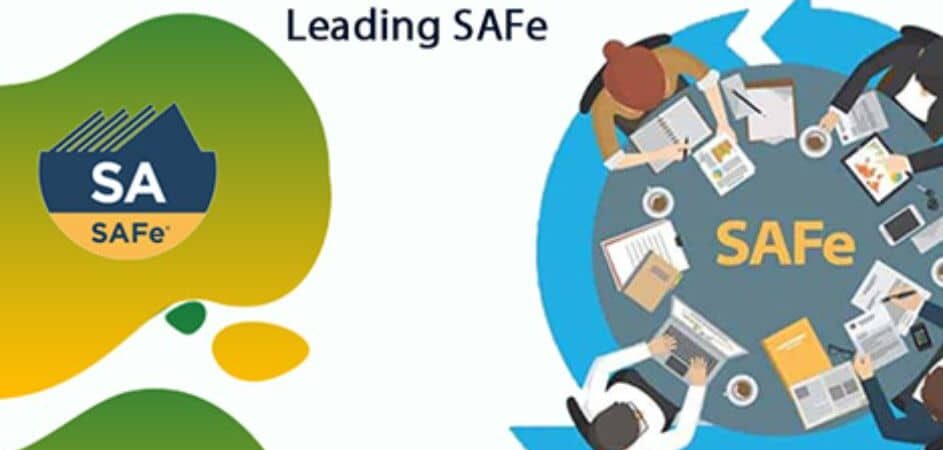
Mastering SAFe Agile methodologies begins with an understanding of its core principles.
For professionals looking to lead SAFe training in Atlanta and other locations, the journey starts with understanding that SAFe, or the Scaled Agile Framework, represents more than a set of practices; it’s a comprehensive approach to organisational transformation.
Start With The Right Mindset
SAFe Agile training requires an agile mindset, meaning openness to change, willingness to collaborate, and readiness to adapt. The individuals who do very well in implementing SAFe first understand that it is both a personal and a team success factor.
Many professionals who attend SAFe Agile Training learn that their former knowledge of traditional project management must be combined with new approaches.
Preparing For The Learning Experience
To be successful in SAFe Agile training, proper preparation is needed. The environment should be free from distractions in both virtual and in-person Leading SAFe training in Atlanta.
Participants must prepare by reading about basic agile concepts and arrive ready with relevant questions about specific organisational challenges.
Engagement With The Material
Active participation in SAFe Agile training is one of the significant differentiators of effectiveness. Rather than a passive observational role, successful learners engage in discussions, ask questions, and share personal experiences.
Training is interactive, where one learns from the instructors and other participants and gets opportunities to learn much more beyond theory in this kind of learning environment.
Application In Training Sessions
The most valuable part of SAFe Agile training is the practice exercises. The hands-on sessions allow participants to apply concepts in simulated environments.
Learners should take full advantage of these practice opportunities when attending Leading SAFe training in Atlanta or elsewhere, as they provide invaluable experience in implementing SAFe principles.
Building A Strong Foundation In Core Concepts
Understanding the essential elements of SAFe brings success. This includes mastering concepts such as Program Increment (PI) Planning, Value Streams, and Agile Release Trains.
During SAFe Agile, highlight how all these components come together to form an orchestrated, efficient system within the organisation.
Networking And Community Engagement
Continuous learning comes about through the SAFe community. Participants should connect with fellow learners and instructors in training sessions, especially the Leading SAFe Training in Atlanta.
Usually, these are people who become helpful when one experiences real-world challenges in implementation.
Implementation Planning
While attending SAFe Agile training, participants should consider how they will apply the learning in their organisations.
Preparation of an implementation roadmap during the training helps bridge theory and practice gaps. This is the planning stage for the successful implementation of SAFe.
Continuous Learning Approach
SAFe Agile training is not an event but a process. The best practitioners are those who have a continuous learning mindset, keeping themselves updated with the latest developments in the SAFe framework.
Continuous participation in workshops, webinars, and community events keeps knowledge refreshed and enhanced.
Tools And Resources
SAFe Agile training under modern conditions always includes exposure to different tools and resources. Successful application of tools during training sets one up to be ready in the real working environments.
Many workers discover that cultural transformation strategies implemented in Leading SAFe training courses in Atlanta come to be basic tools in a day-to-day job.
Understanding How To Drive Cultural Change
Successful participants learn not just the framework itself, but how to become change agents within their organizations. This includes developing skills in communication, leadership, and change management.
Measuring Success And Progress
During SAFe Agile training, participants learn various metrics and measurement techniques. Understanding how to track progress and demonstrate value is essential for successful implementation. This knowledge helps in building support for SAFe adoption within organizations.
Advanced Concepts And Specialization
As learners progress through SAFe Agile training, they often discover areas where they want to develop deeper expertise.
Whether it’s portfolio management, product ownership, or release train engineering, identifying these areas during training helps guide future professional development.
Remote And Hybrid Implementation
Modern SAFe Agile training involves tactics for the adaptation of the framework in remote and hybrid environments, which is relevant to organizations since they have adapted to the ever-changing dynamics at the workplace.
The knowledge and skills acquired from training will come in handy during implementation.
Conclusion
Success in SAFe Agile training comes with a combination of theoretical understanding and practical application.
Whether attending the Leading SAFe Training in Atlanta or anywhere else, it is only with active engagement, continuous learning, and a commitment to implementing principles learned that people can maximise their value from the SAFe experience and successfully lead organisations through agile transformation.
The journey through SAFe Agile training is the first step in a transformation that can turn around how organisations work.
By seriously and enthusiastically undertaking the training, participants would develop the skills and knowledge essential for driving successful SAFe implementations and creating durable, long-lasting positive change in organisations.


